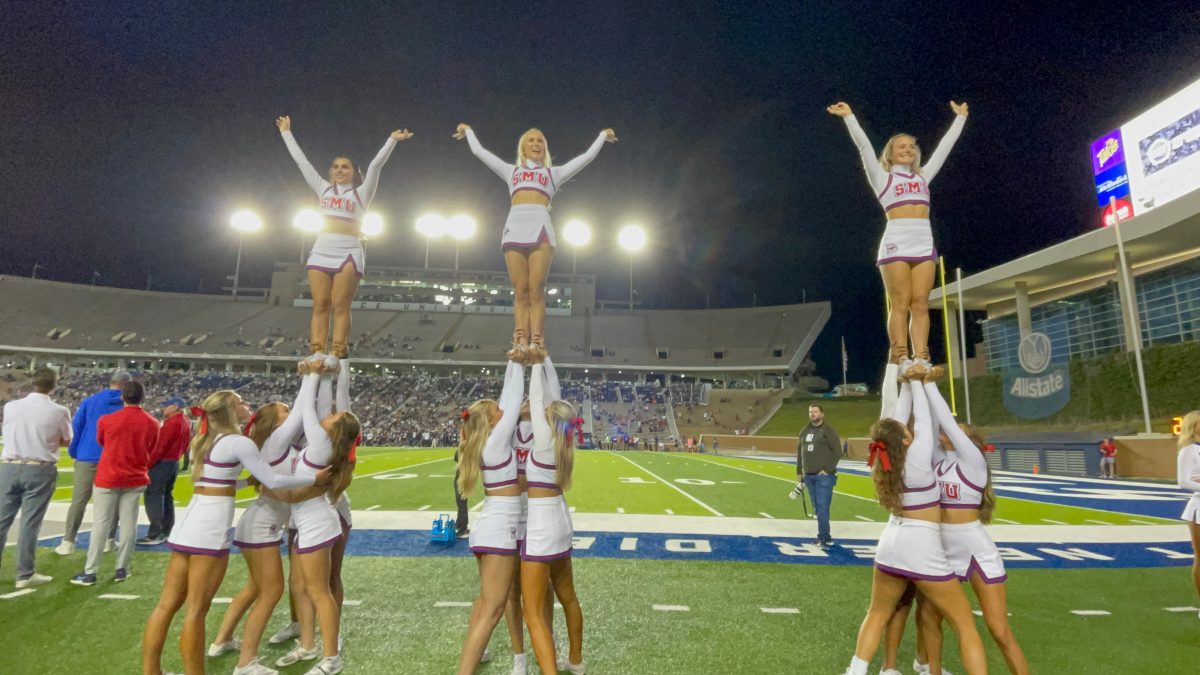Any member of the SMU community could probably name at least five varsity or club sports offered at the school; however, most students likely would not mention polo.
Many students and professors are unaware that in the fall of 2009, a horse polo team began the chartering process to become an official club sport at SMU.
The proposal for the team started with Enrique Ituarte, a current sophomore.
After graduation, Ituarte asked Culver Military Academy Coach Tom Goodspeed to accompany him to Texas and help instigate a polo team at SMU, as he wanted to continue the sport beyond high school.
“I love the sport so much and I knew more people [at SMU] who loved it as much as I did,” Ituarte said.
When the team was initially proposed, almost two dozen students were interested in membership. Ituarte is now the captain of the men’s team, and Goodspeed is the coach of both the women’s and men’s teams.
The captain of the women’s team and current junior, Pam Flanagan, knew both Ituarte and Goodspeed from her days at Culver and provided further support for the initiation of a polo team.
Each team is comprised of multiple experienced riders, though only three players from each team would be in the arena at a time during a game.
Ituarte, Audie von Gontard, Bobby Isakson, August Scherer and Pablo Diaz make up the men’s team, while Flanagan, Chloe Carabasi, Zara Walsh, Kelsea West, Olivia Flores and Rachel Conover all participate on the women’s team.
Although the team is very new, it has already done very well. In a recent tournament, Fall Fandango, the women’s team placed third out of 12 teams.
The growing success comes as no surprise, as in addition to a team of top tier riders, the coach is a well-known and respected figure in the world of polo.
Goodspeed won the Polo Magazine Award for “Arena Player of the Year” in 1995, and became one of eight players to hold the highest arena handicap in the world of nine goals; he also carried a five-goal handicap at the height of his outdoor polo career.
In arena polo, three team members from each team are in the dirt arena at a time, and essentially try to score goals on either designated end of the arena by hitting a small, leather-covered, inflated white ball with a long-handled mallet. The game is split into four periods of play, called chukkers, which are seven and a half minutes long.
As opposed to hunter jumpers, polo is a team sport that incorporates many elements and requires a lot of added skill and thought.
Carabasi, a freshman, joined the team because although she loved riding horses, she missed the group aspect that polo offers.
“Polo gives you the best of both worlds: horses, but with a team,” Carabasi said.
Walsh, a freshman, added, “I really like the adrenaline rush, because it’s a really fast game. You have to be really skillful and there are a lot of tactics. [Polo] is quite complicated, which makes it interesting. You have to think fast on your feet.”
The horses have to be trained specifically to be polo ponies, and a lot of times they have to be a certain size, typically thoroughbred quarter horses.
“You want speed and agility mainly. The best polo horses are fast, but can stop on a dime, turn around, and go just as fast the other way in seconds,” Flanagan explained.
West, a junior who was recruited from SMU’s varsity equestrian team by Flanagan, commented, “[Polo is] a lot more aggressive [than riding], which is something I had to get used to.”
The SMU polo season runs from November through April, and the Collegiate Regional National championship tournaments are in March and April.
On average, practice is held three times a week for three hours at a time at Las Colinas Equestrian Center, a facility just 15 minutes away from campus.
The generous contributions of a student’s family, and others in support of the SMU polo team, have enabled the team to progress quickly through the chartering program and acquire a string of 11 polo ponies. The extra measures added to care for and house the horses make polo one of the most expensive sports.
What with SMU’s demographics, the mustang mascot, and the popularity of polo in the Dallas area, Flanagan found it “surprising that it took so long for SMU to get a team.”
Polo dates back to at least the fifth century B.C.E., when it was played in Persia as a training tactic for battle. Since then, polo has traveled across the world through royalty and celebs, and finally to anyone who is curious to try out the sport.
Goodspeed revealed that “every once in a while people will come for a few times and just learn about polo. If someone’s interested in learning, they can come and help during the week a little bit and get a lesson in return.”
Those interested in playing pay a fee to help defray expenses for the horses.
The program still has a lot of potential to grow, and according to Flanagan, “eventually [SMU polo] could be a varsity sport; it just has to continue getting the support that it’s getting now.”
For now, the hopes of the polo team are to make their success and existence known to the university, and “[to] get the school involved,” Ituarte said.










